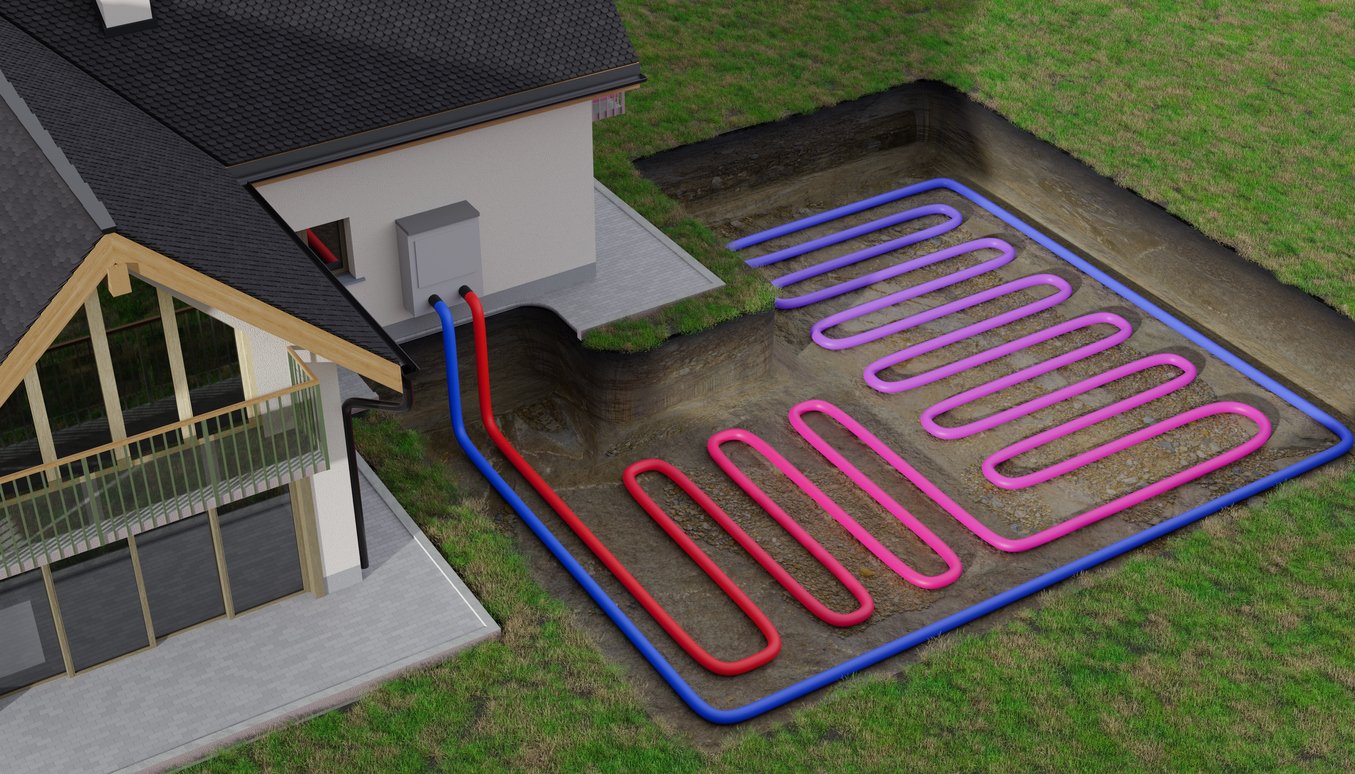The most efficient type of HVAC system is a geothermal heat pump. They're not practical for everyone, but if you're able, there's no better way to heat or cool your home. Read on to learn how geothermal energy works.
Geothermal Energy
No matter how hot or cold the weather gets, the temperature about 10 feet below ground remains constant at 54 degrees. A geothermal heat pump uses that energy to heat or cool the air circulating through your home.
A loop of pipe, called a heat exchanger, is buried underground, and water or another liquid circulates through it. In winter, when the temperature below ground is warmer than the surface temperature, the liquid absorbs that heat and uses it to warm the air. Your regular heating system then warms the air the rest of the way, using much less energy than it would take to heat the freezing winter air directly.
In summer, it works the other way. The system absorbs heat from your home and uses the heat exchanger to transfer it into the ground. The cool water in the pipes then cools the air that circulates through your home.
Types of Geothermal Heat Pumps and Geothermal Energy
There are four types of geothermal heat pump. Most common is a horizontal system, where the pipe is buried 10 feet below ground in a loop around your property. If there's not enough room on the property for the pipes to spread, a vertical system can be used instead, meaning the pipes are buried straight down, between 100 and 500 feet below ground.
If your house is near a body of water, you can install a less-expensive lake-source heat pump. Instead of going underground, the pipes run to the bottom of the lake, at least 8 feet beneath the surface, and the system functions the same way. Finally, an open-source heat pump can collect water from a well, loop it through the system, then deposit it back into the well.
For help installing a geothermal system and geothermal energy in your home, contact us at Air Assurance. We keep Broken Arrow homes comfortable and efficient.

